


















 IWC PORTUGIESER HAND-WOUND TOURBILLON DAY & NIGHT
IWC PORTUGIESER HAND-WOUND TOURBILLON DAY & NIGHT





















 IWC PORTUGIESER HAND-WOUND TOURBILLON DAY & NIGHT
IWC PORTUGIESER HAND-WOUND TOURBILLON DAY & NIGHT


audi Arabia is a country that raises many questions. The country has only been open to tourism since November 2019 and what we know is limited to a few key words: oil, desert, Mecca, wealthy sheiks, strict Islamic and misogynistic. The young Crown Prince Mohammed bin Salman is working hard on an ambitious modernisation plan that will have an impact on all facets of life in the country. What is Saudi Arabia like for a Western visitor in 2024? We'll find out. We know one thing for sure: there is no shortage of Porsches.
With a land area of 2.15 million square kilometres, the Kingdom of Saudi Arabia (as it is officially called) is the largest country in the Middle East and the 13th largest in the world. For years it was off-limits to foreigners. Only approximately two million Muslim pilgrims and a few businesspeople (with a visa that was difficult to obtain) were allowed into the country. Others were not welcome. The fact that the country is now suddenly changing course and opening its doors to international tourism has to do with economic interests. Although the country is filthy rich thanks to its generous oil resources, the economy urgently needs to be diversified.
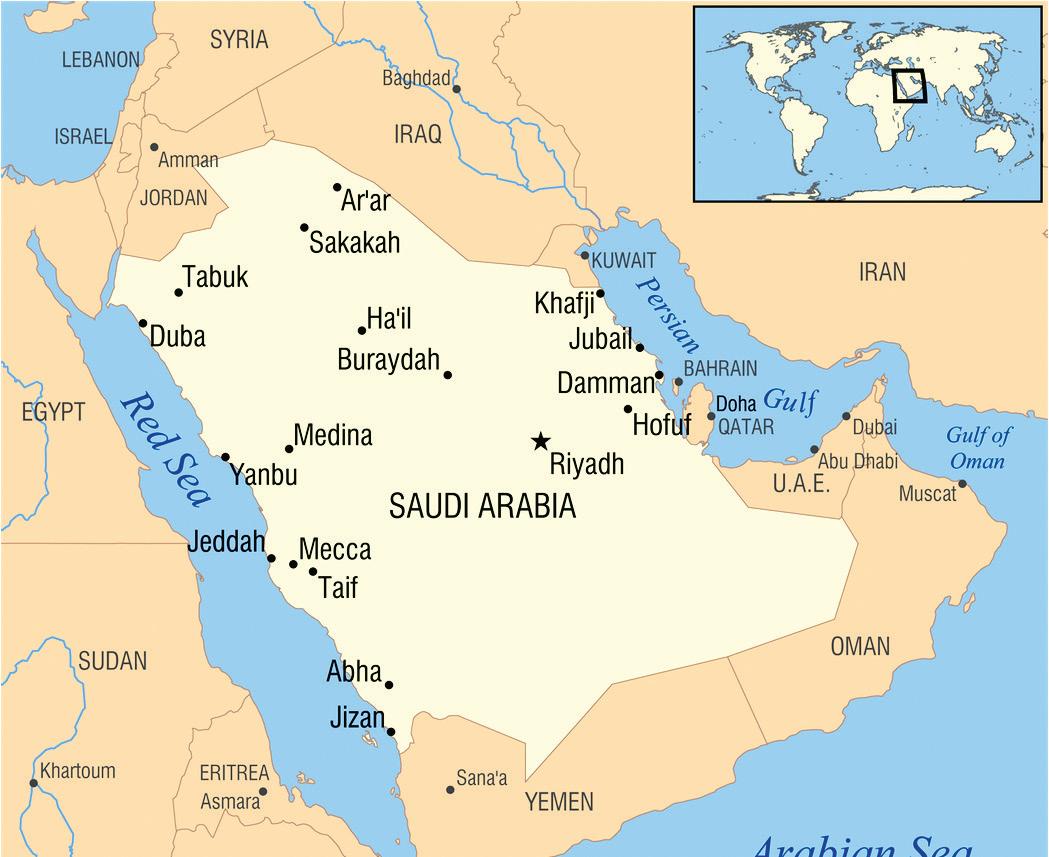

The country is now seeking to rebrand itself as a travel destination that can rival Gulf neighbours such as Dubai, Abu Dhabi and Oman.
The country is now seeking to rebrand itself as a travel destination that can rival Gulf neighbours such as Dubai, Abu Dhabi and Oman. Whether that will succeed remains to be seen. Saudi Arabia has a lot to offer - from stunning desert, mountain and coastal landscapes, ancient archaeological sites to ultra-modern, cosmopolitan cities - but suffers from a poor image. The country has a dismal record in terms of human and women's rights and does not tolerate any criticism of the regime. The gruesome murder in 2018 of the Saudi journalist Khashoggi in the Saudi embassy in Istanbul is also still fresh in our minds.

Officially, King Salman bin Abdul Aziz al-Saud (88) is the leader of Saudi Arabia, but it is mainly his eldest son Mohammed bin Salman (38) who is in charge. Since he became crown prince in 2017, he has wanted to transform the country into a modern superpower.
The charismatic man – never clean-shaven and always with an affable smile – bundled his grand plans in his 'Vision 2030'. With this plan, he wants to diversify Saudi Arabia's economy so that the country is less dependent on oil revenues and at the same time promote the country's social and cultural development.
Whether his plan is realistic and feasible within the proposed time frame is doubtful, but in any case, the crown prince does not stop at words alone. There are actual changes in the arch-conservative kingdom. Women once again have more rights, the power of the religious elite was curtailed, and the moral police were silenced. In the country where until recently music was not even allowed to be played in the car, international DJs are now rocking large halls and people are allowed to party again.
To diversify the economy, Mohammed bin Salman mainly focuses on tourism. It is no coincidence that the country has opened its doors. Saudi Arabia is launching one prestige project after another, throwing thousands of billions at it. Hotels and resorts are springing up like mushrooms near the Red Sea and Qiddiya near Riyadh is being billed as the world's largest 'entertainment city'. And then there is Neom, a new futuristic city in the northwest of the country where people will travel in self-driving cars and passenger drones. The first part is expected to be completed in 2025.
However, there is also a dark side to the plan. Human rights are absent from Bin Salman's vision and anyone who dares to question the crown prince's policies is silenced. Does that mean that he is more of a dictator than a reformer? Perhaps he is both.
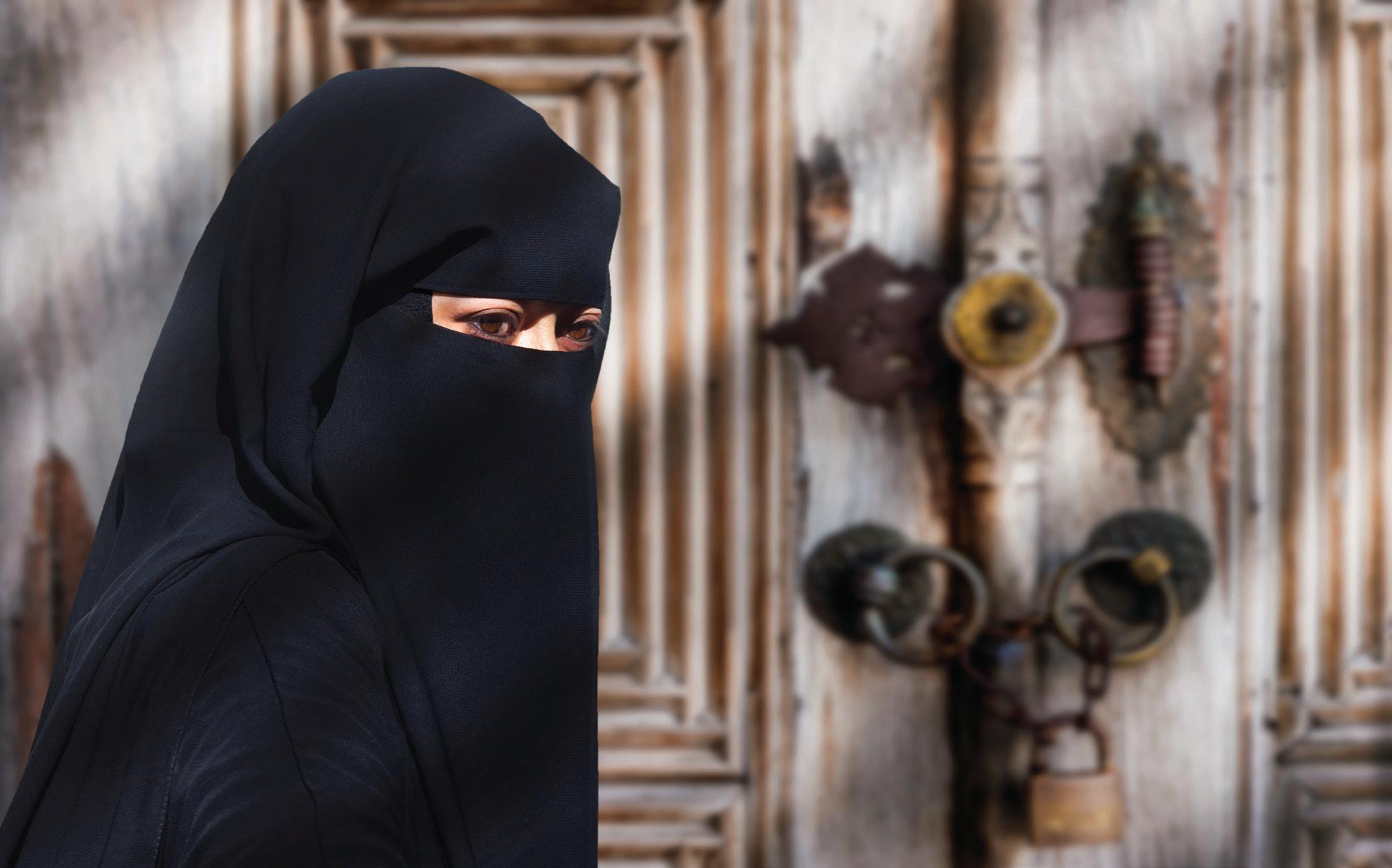
Even though Saudi women have been free to wear whatever they want for about three years now, 95% of the women are still dressed in a black gown that covers the entire body leaving only the eyes exposed.
Because Saudi Arabia has only been allowing foreign tourists for four years, we expect a difficult passport and visa check upon arrival, but to our surprise it goes surprisingly smoothly. There are only female officials in the customs booths. They all wear a black niqab , a face veil that covers the entire face, leaving only the eyes exposed. Beautiful, dark, perfectly made-up eyes peek through the narrow slit. Some girls have even drawn a perfect wing, a graceful arc with black eyeliner that runs upwards beyond the eyelid. Look at that, the only thing they show is beautifully presented.
Even though Saudi women have been free to wear whatever they want for about three years now, all the women around me are dressed in a black abaya , a gown that covers the body from head to toe, and they all wear a black headscarf in combination with a niqab . I am the only nonveiled woman in the arrivals hall. Before leaving, I naturally looked up how I should dress as a Western woman in the conservative country. Modestly, I had read, but an abaya would not be necessary, and a headscarf would only be mandatory in religious places. With wide trousers, a long cardigan and a large scarf strategically wrapped around my neck, I seem to meet the requirements. I get a lot of looks, but I don't notice any disapproving looks. Just curiosity. That's quite a relief. Hopefully it will stay that way for the rest of the trip. Almost all of the men wear the traditional thobe - a long white garment that is always immaculately starched. The typical red and white checked scarf adorns the head. A round leather strap keeps the thing in place.



We look forward to meeting James Butler. James is National Sales Manager at Porsche Centre Riyadh and we have been in contact for about three years. We wanted to go to Saudi Arabia from the moment we heard that the country was open to tourists, but then Covid threw a spanner in the works. Now the time has finally come. James is a warm-hearted Brit from Manchester who has been living and working in Saudi Arabia for 14 years. “I'm sending you out with one of my employees,” he says. “That way you’ll get a first impression of the city.” We think that's a great idea. A sightseeing tour in a brand new Taycan is more fun than in a taxi. Turki is our driver. Porsche Pro Genius is what it says on his badge. “I am the secret box of the Porsche garage,” he says, laughing. “I know everything about Porsche, even those things you can’t find in the manuals.”
Riyadh shows off its wealth. Along the wide highways we see an abundance of shiny, imposing buildings. Large billboards display the most expensive luxury brands and immense skyscrapers form an impressive skyline. Some buildings are particularly eye-catching, such as the Kingdom Tower , the city's tallest building, which looks like a bottle opener thanks to the large opening at the top, and the Al Faisaliyah Tower with its remarkable golden sphere at the top. They are both examples of ingenious modern architecture. Turki also takes us to historic Riyadh. Ad-Diriyah with its traditional loam buildings and mosques is the cradle of modern Saudi Arabia. The 19th century Al-Masmak Fort played an important role in the unification of the country.



We are glad that we don't have to drive ourselves, because the traffic in Riyadh is a nightmare. Even though the roads are super wide with different lanes, the flow of traffic is relentless. A drive from A to B is a daily battle. A fight that Saudis wage without any form of compassion. Not an inch is granted to others. Tailgating is taken literally here, and traffic rules are non-existent. Saudis drive like crazy people. Overtaking on the right is just as common as overtaking on the left. Drivers who, while on their phones and without looking, move several lanes to the left or right and then abruptly stop their car in front of ours are commonplace. Only one rule applies here: whoever has the most balls has priority. And we have to drive in this witch's cauldron ourselves tomorrow. “Expect the unexpected,” Turki grins. We'll see how that turns out.
Riyadh shows off its wealth. Along the wide highways we see an abundance of shiny, imposing buildings.
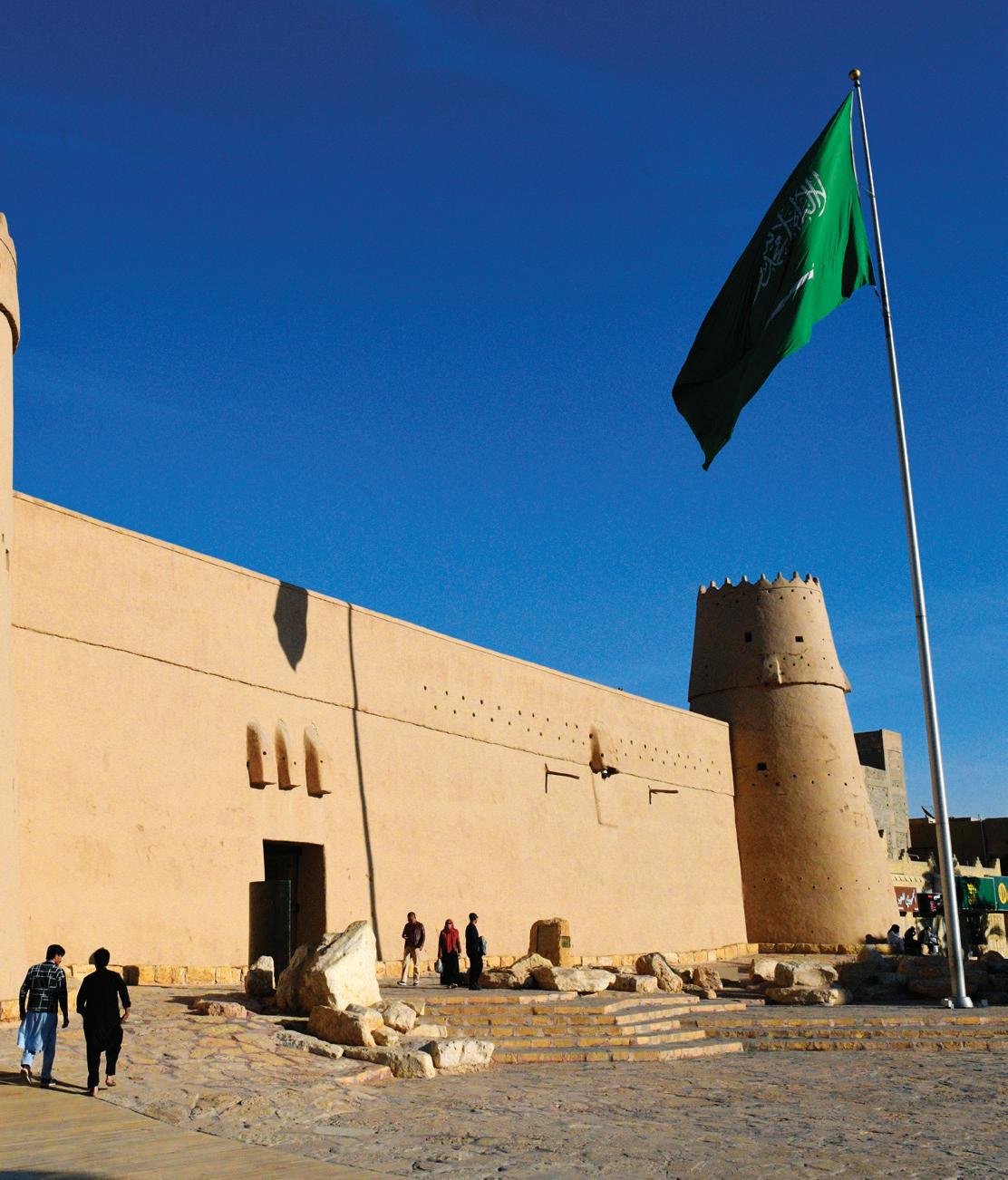



A visit to the Ritz-Carlton Hotel has to be on the agenda. In 2017, the hotel made news as the world's most luxurious prison. When he took office as crown prince, Mohammed bin Salman unceremoniously had family members, ministers and businessmen - about two hundred people in total – imprisoned there. Officially they were accused of corruption and abuse of power, but many believe that the crown prince simply wanted to show who the new “strong man” was. The detainees were only released after reportedly paying around 100 billion euros in fines.
In 2017, the Ritz-Carlton Hotel made news as the world's most luxurious prison.
When night falls, Riyadh really comes to life. Then the city is bathed in a magical glow of artificial light. All buildings are gloriously illuminated in a range of colours, making the city look even more beautiful. In the evening, the Saudis also go out en masse. To cafes and restaurants without alcohol and to the many shopping centres. No European shopping centre can match the grandeur of the gigantic Saudi shopping meccas. Women in abayas and men in thobes stroll past the shops. Black versus white like figures in a chess game. Only Western clothing is displayed in the shop windows, from jeans and crop tops to elegant haute couture and sexy evening wear. When do the women wear that here? we wonder. Mannequins even show off the latest lingerie collection. A strange contrast in this conservative country.


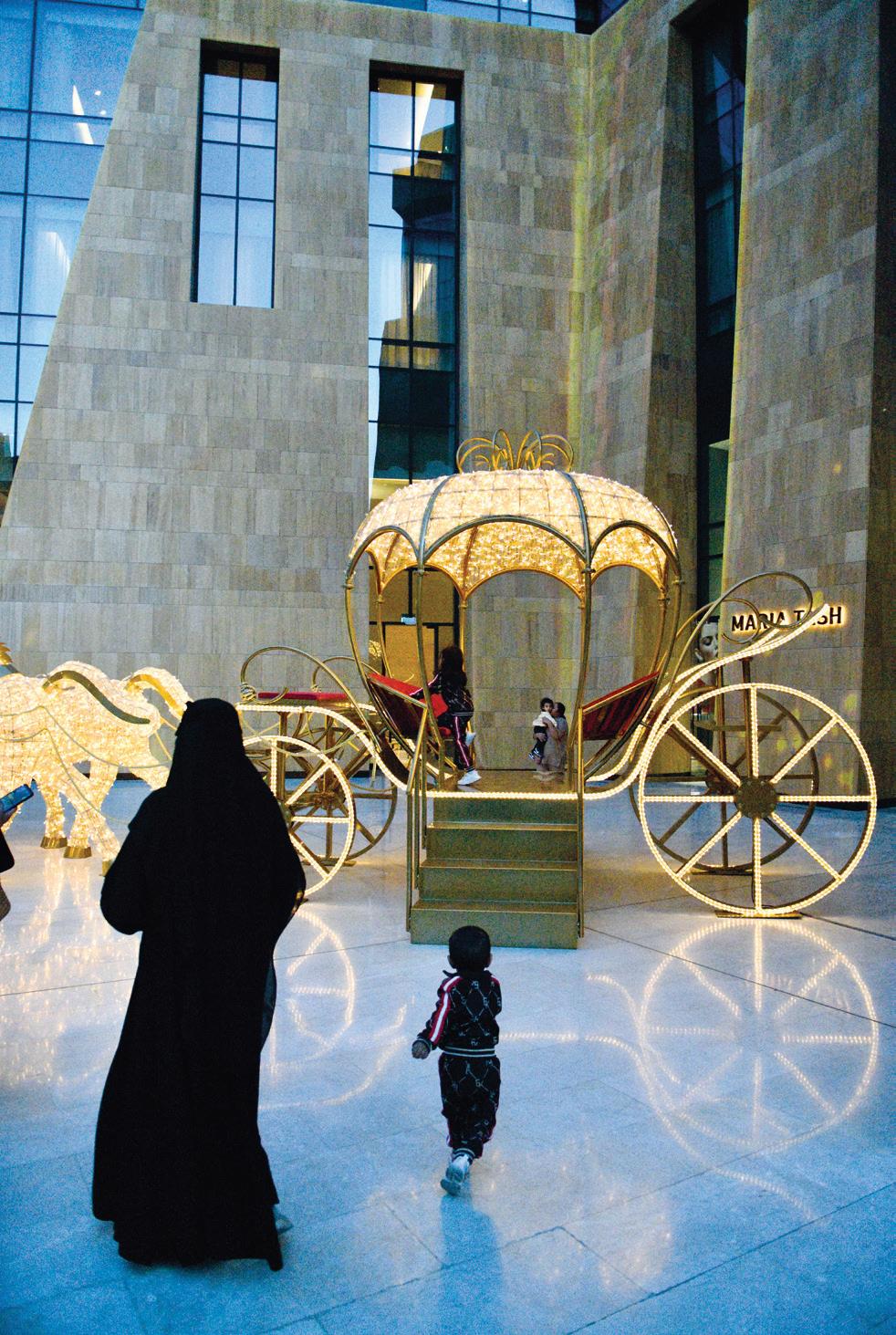

endless roads through the desert.
Our visit to Riyadh was a success. We discovered a vibrant city, spoke not only with James Butler but also with the General Manager of Porsche Centre Riyad and had fascinating conversations with three Porsche drivers. (The interviews can be found elsewhere in this magazine). James Butler even promised to take a Taycan to the middle of the Hijaz desert, about 1,000 kilometres from Riyadh. “I'll put it on a trailer,” he said. “That will definitely produce spectacular images.” We wonder if he will pull it off, but if such a crazy idea can come true anywhere, it is here.
We leave the capital and start our road trip. We have a journey of about 3,000 kilometres ahead of us. From the centrally located Riyadh to the far north to the city of Tabuk, from there west to Al-Ula, which is known as the Pearl of Saudi Arabia, and then via Medina to Jeddah on the Red Sea. We will travel in a big U-shape across the map. As soon as we leave the big city, we end up in an immense sandbox. The entire interior of Saudi Arabia consists of desert. The two-lane road that stretches endlessly in front of us is perfectly maintained. Apart from a few lorries, we have the road to ourselves. We would love to fully put our foot on the accelerator and speed along, but unfortunately there is a speed limit of 120 kilometres per hour (140 kilometres per hour in some parts) and there are many radar checks. In this country we don't want to get a speeding ticket, so we switch on the cruise control. There are regular warning signs: 'Attention! Sandstorm Area!' or 'Attention! Camel Crossing!'. The many unannounced speed bumps are a nuisance. Every now and then we still get caught out and bounce over them at full speed. Bam! Then we hope that all parts are still fixed to the car. We cover about 400 kilometres per day. We spend the night in cities such as Buraydah, Hail and Tabuk, which once originated as small settlements around fertile land and grew into large agglomerations over the centuries. The structure of Saudi Arabia is simple: the cities are modern, overcrowded and hectic, outside of them there is great emptiness.









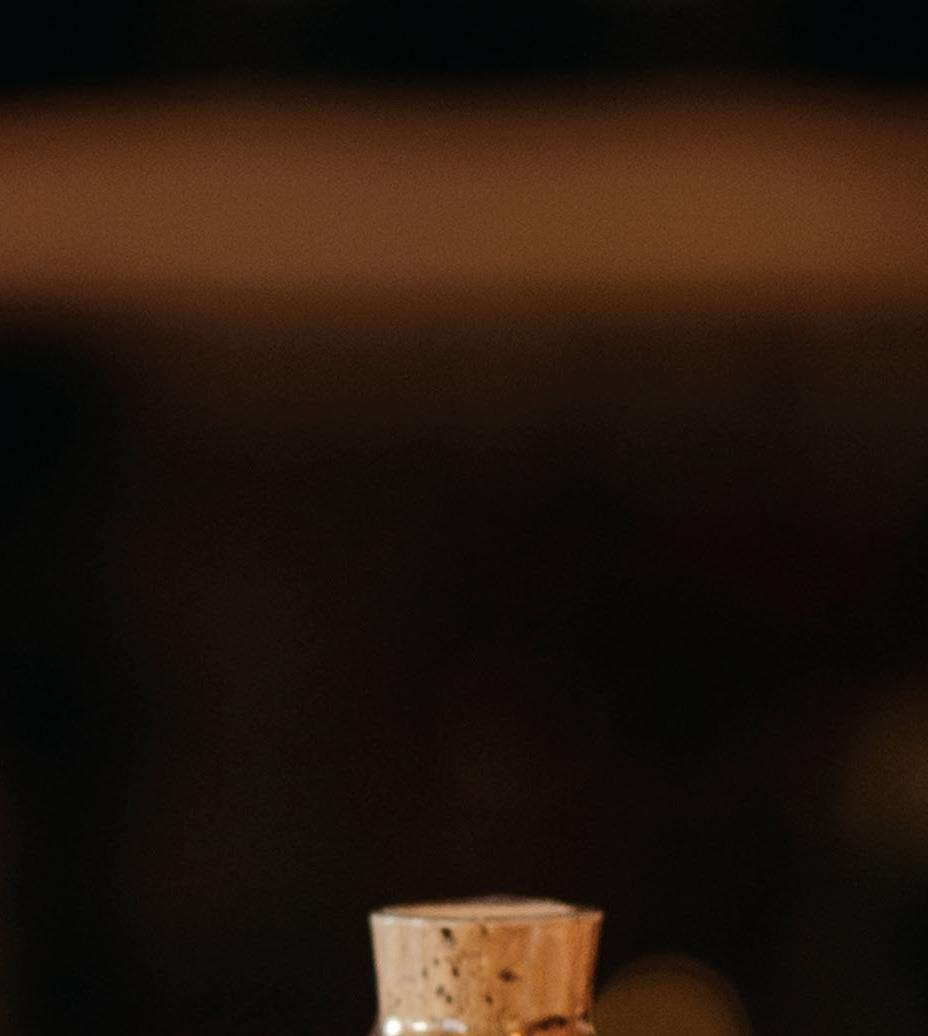




Authentic Belgian gin
100% botanicals, 0% alcohol
Traditionally distilled by Filliers Distillery, with craftsmanship of the highest quality
Low calorie for a responsible choice Vegan TRY NOW OUR COPPERHEAD NON-ALCOHOLIC - -



Today we see a police car with flashing lights on the side of the road every 500 metres. Strange. Perhaps a high-ranking official will pass through, we think. Until we see heavily equipped cars, trucks and quads full of colourful sponsor stickers. There are rugged men and tough women behind the wheel. Of course: the Dakar Rally ! It started on 5 th January in Al-Ula and finishes in Yadu on the Red Sea. While we make a large loop to the north, the Dakar participants make an even larger loop in the opposite direction, to the south. So it's not surprising that our paths cross. Every now and then they have to drive for a bit along public roads to start the next stage. Some members of the rally organisation also sleep in the hotel where we spend the night. They stand out because of their brightly coloured parkas. No hard bed on a bivouac site for them, but a soft bed and fresh sheets.
The Belgian Pieter Peerlings is taking part in the Dakar Classic Rally with his 1980 Porsche 924.



We search the internet to see if any Belgians are participating with a Porsche. And yes, Pieter Peerlings is taking part in the Dakar Classic Rally with his 1980 Porsche 924. We find his contact details and send him a message asking if we can meet him. “I'm not staying at your hotel,” he replies, “but I'll drop by tomorrow morning.” And indeed, promptly at half past nine he appears in the lobby in the company of Ivo, his technical assistant. “We're out,” he says immediately. “The turbo has failed. We wanted to participate with an original 924 that had been changed as little as possible, only the bare essentials such as modified tires and a roll cage. Unfortunately, the desert was too strong.” In daily life, Pieter is a successful architect and co-inspirer of the Glorie. Today Arts Centre. He has long had a passion for classic Porsches. The idea to participate in the Dakar Rally arose on an evening where a little too much alcohol was consumed, but as an ultrarunner Pieter likes a tough challenge. Would he consider a second participation? “Certainly, but with a Porsche that is better equipped and provided I can find sufficient sponsorship again.”

We see huge clouds of dust. A small sandstorm is our first reaction, until we realise that it is a camel race. We turn the car around and drive towards the dust. Camel racing is a favourite pastime of Arabs. An Arab spontaneously asks us if we want to see the start. We get into his car and drive along with him. Our kind man's name is Eid Alatwi. “Today there are 29 races divided over four distances: 1,200 metres, 1,500 metres, 4,000 metres and 5,000 metres,” he explains. He points enthusiastically to a camel with an orange saddle. “My camel,” he says proudly. There are 15 of them at the start. Excited, full of nervous adrenaline. Unlike equestrian sports, there are no jockeys. There used to be. The camels used to be ridden by very young children. They were the lightest. This came to an end in 2005 due to international pressure. All that jolting wasn't exactly healthy for those young bodies. The children have now been replaced by small robots that are strapped to the backs of the animals and control them. They hear their trainer's voice through a walkie talkie. If things don't go fast enough, the robot even has an integrated whip that is controlled remotely and can give the camel a tap.




When the banner goes up, the camels take off like a rocket. And so do the owners and trainers who follow their camels by car. It is a wild affair because the cars drive as fast as the animals, which can easily reach around 60 kilometres per hour. It is also dangerous because the drivers keep an eye on the performance of the camels while driving and hardly pay attention to the road. The trainer shouts encouragement into the walkie talkie. Would the animal really react to that? There is a separate road for the car of the competition organisation. A jury member films the race so that there can be no arguments about the winner. As soon as the finish is reached, Eid and the trainer jump out of the car. The camels walk into a large box where the handlers take care of them. White foam runs from their mouths. They have done their best. In this competition the prize pool is modest, and it is mainly about honour, but the big races are big business.
Camel races are often big business in Saudi Arabia.




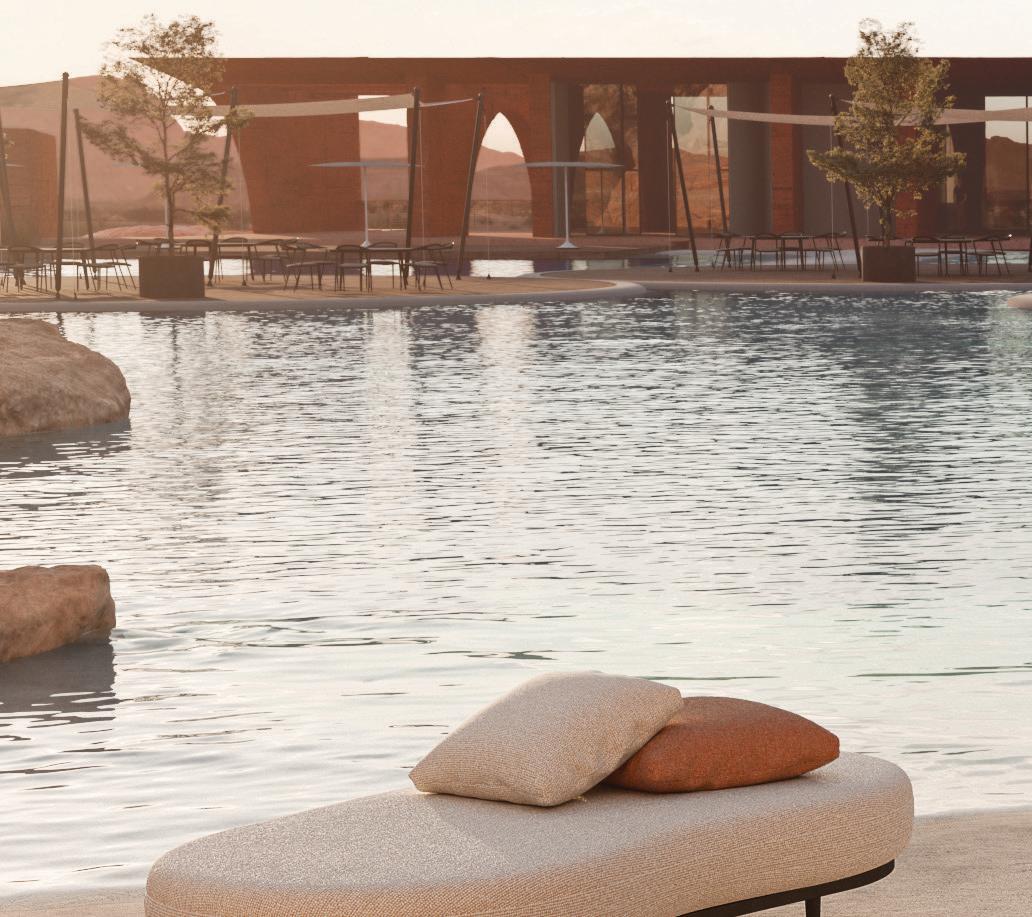

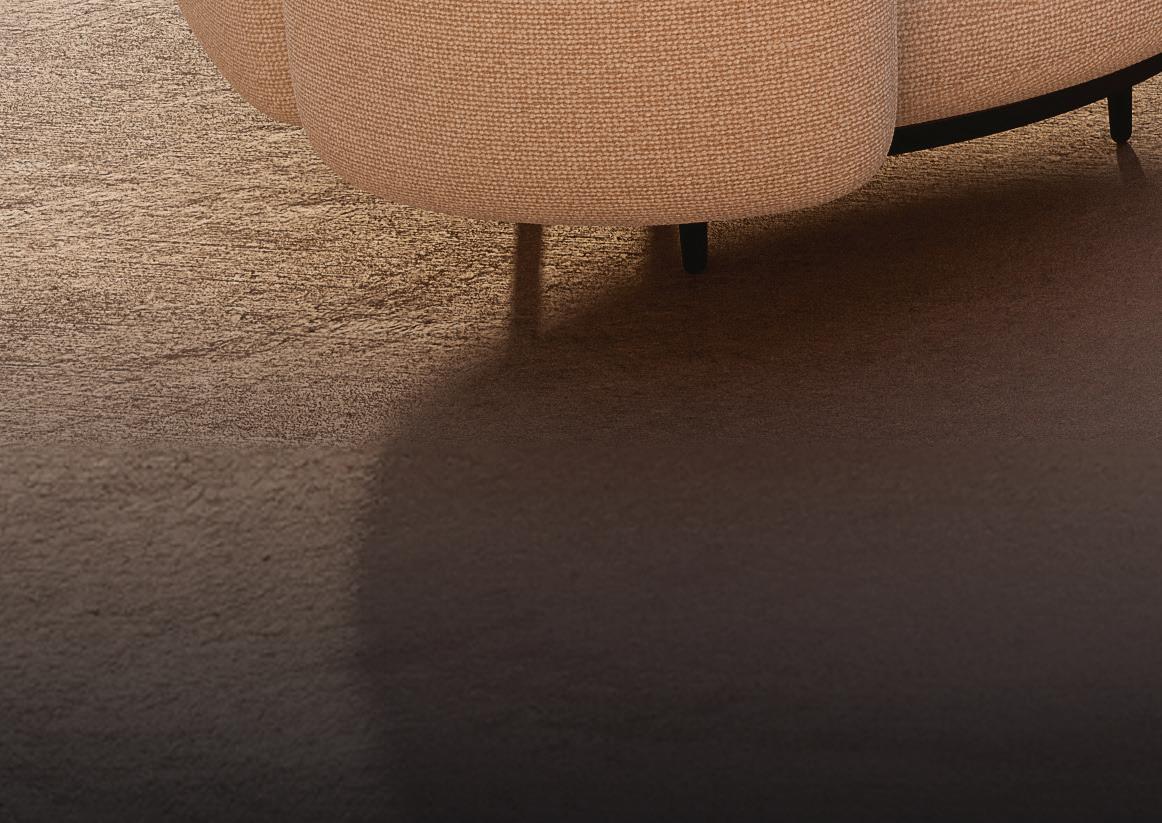
VISIT OUR DEALERS:
ANTWERPEN
BOURBON-SLEECKX - SCHILDE, 033 83 06 69
DE BOOMGAARD - LILLE, 014 55 45 17
HANOLUX - TURNHOUT, 014 41 76 74
BRUSSEL - BRUXELLES
COMPAGNIE DES JARDINS - BRUXELLES, 023 75 72 39
PLAISIR DU JARDIN - BRUXELLES, 023 75 60 26
LIMBURG
CARMETUM - KERMT-HASSELT, 011 25 46 55
CARMETUM - MAASMECHELEN, 089 23 78 37
NAMUR EST GILLOT - HANRET-EGHEZEE, 081 81 17 71
VLAAMS-BRABANT
HOME & GARDEN - LEUVEN, 016 46 44 47
VANHIE - MEISE, 022 72 01 72



WEST-VLAANDEREN
DRAFAB GREEN - POPERINGE, 057 30 00 41
DECOTUIN WOONDECO - MIDDELKERKE, 059 30 61 29
GHEQUIERE - KORTRIJK-AALBEKE, 056 41 29 65
MEUBILI - KNOKKE, 050 60 40 14
OOST-VLAANDEREN
‘T HOOFT - GENT (DRONGEN-BAARLE), 092 82 31 22
TUINMEUBELEN VAN MELE - HAMME, 052 47 90 14
VANDELLA LOCHRISTI - LOCHRISTI, 093 55 65 01
VAN PRAET – MOORSEL (AALST), 053 70 27 61









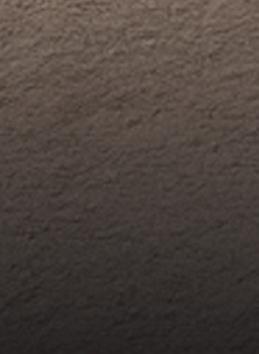












In the meantime, the landscape has changed. Imposing rock formations, sculpted by the wind, appear everywhere. They rise up from the red sands and stand like immense alien beings in an infinite setting. They form deep canyons through which we drive in utter admiration. The special desert area of Al-Ula is known as one of the most beautiful natural phenomena in the world. Towering rocks, sandstone cliffs and dark moon-shaped volcanic plateaus alternate.
It has to be seen to be believed, but in the middle of this dramatic landscape stands the largest mirror building in the world (13,500 m2). The walls are 160 metres long. Our jaws drop when we catch the first glimpse of it. This is only possible in Saudi Arabia. “I want a phenomenal concert hall near Al-Ula,” Crown Prince Mohammed bin Salman had said. The foreign architects who were recruited to realise the project were so impressed by the beauty of nature that chief

architect Florian Boje wrote when submitting his concept: 'Nothing visible should allowed to be built here, so if it really has to be done, it has to be become a mirror cube.' And so it happened.
The result is astonishing. The Maraya Concert Hall – 'maraya' means 'mirror' or 'reflection' –is an architectural marvel. More than 9,000 mirrors reflect the desert landscape. The cube flirts with the rocks, the clouds and the sky. The building is like a mirage. One moment you see it clearly, the next moment it dissolves into nothingness. In the meantime, Maraya has created an extensive musical agenda with something for everyone: from classical concerts, small-scale shows to all-night dance festivals. Big names from across the music world such as Alicia Keys, Andrea Bocelli, James Blunt and Usher have already performed here.


Now that we're there, we want to catch a concert. We would also like to see the inside of the Maraya building. The Swiss Philharmonic Orchestra will perform tonight. When an international event takes place in Saudi Arabia, it is tackled on a grand scale. Nothing is too much or too expensive. There is a small airport near Al-Ula. Many guests have arrived by helicopter or private plane during the day. The concert hall is bathed in a sea of light with countless candles marking the way to the entrance. Riders in full regalia form a stately guard of honour. We arrive in style in a green Taycan. James Butler of Porsche Centre Riyadh has kept his promise and succeeded in bringing a Porsche to the desert. Among all the heavy, mainly black 4x4s, is the Taycan in Mamba Metallic Green an example of refinement and elegance. Something like a fierce thoroughbred in a herd of Brabant draught horses. The car attracts a lot of attention and admiring glances. But there are also a lot of thoroughbreds inside and then we are talking about feminine beauty that suddenly displays all her assets. Where are those black abayas? We see ladies in exclusive, revealing evening dresses and sky-high heels. The fact that the audience is international partly explains the variation in outfits, but the Arab women also play their part. How things can suddenly be different. Or is it perhaps a case of 'what happens in Maraya, stays in Maraya'? Even we are taken aback momentarily by so much outward display. If you have only seen women dressed like black crows in public life for almost two weeks, this fashion festival is a bit of an adjustment.








NIEUWE LOCATIE LEYSSTRAAT 1, 2000 ANTWERPEN - 03/213 50 80 SCHUTTERSHOFSTRAAT 30, 2000 ANTWERPEN - 03/226 41 44




Al-Ula not only boasts natural wonders but is also home to countless archaeological sites. For centuries, this region was an important crossroads for the caravans along various trade routes that connected Asia, Africa and Europe and facilitated the trade in precious products such as spices, frankincense, myrrh, cotton and silk. The crown jewel of Saudi Arabia's archaeological sites is Hegra , located at the foot of the Harrat Uwariyd massif. It was the first site in Saudi Arabia to be included on the UNESCO World Heritage List.
The crown jewel of Saudi Arabia's archaeological sites is Hegra, built by the Nabataeans about 2,000 years ago.
While almost everyone knows the historic city of Petra in Jordan, few have heard of Hegra. However, Hegra was built by one and the same people: the Nabataeans, an ancient civilisation of Arab merchants. Both desert cities were built about 2,000 years ago. Petra was the capital of the Nabataean empire, Hegra a southern outpost. Hegra has more than 110 well-preserved tombs, each masterfully carved from the desert rocks. The many refined details in which images of phoenixes, eagles and snakes can clearly be recognised showcase the special skills of the master masons. The most famous tomb is the 72-metre high Qasr al-Farid (Arabic for 'the lonely castle'), which, as the name indicates, stands alone on a vast sandy plain. We are just in time to admire the sunset at Elephant Rock
We stay at the Banyan Tree Resort , a luxury accommodation just two kilometres from the Maraya Hall. The style of the resort is inspired by Bedouin culture with tent villas that completely blend with the environment. The canvas and the desert sand are exactly the same colour. Due to the well-thought-out positioning between the rolling sand dunes, each villa has complete privacy. There is absolute peace and quiet. A wonderful place. Cristiano Ronaldo also thought so; he spent almost a full month here in December 2023.
The style of the Banyan Tree Resort is inspired by Bedouin culture with tent villas that completely blend with the environment.

There is no better way to experience the majesty of this beautiful rock desert than from a hot air balloon. We take off at 6am so we can admire the enchanting spectacle of the sunrise over the desert. As darkness slowly gives way to dawn, the previous evening’s concert still resonates in our ears. The music fits perfectly with the rising of the sun. With the first glimmers we hear the delicate sounds of the harp, the strings accompany the colour change of the sky that changes from purple and violet to pink and orange. The music swells to a crescendo until the finale when the sun rises in full glory in the firmament and casts its warm glow over the impressive landscape. The invisible conductor – Allah, God, whoever or whatever – is doing an excellent job again.









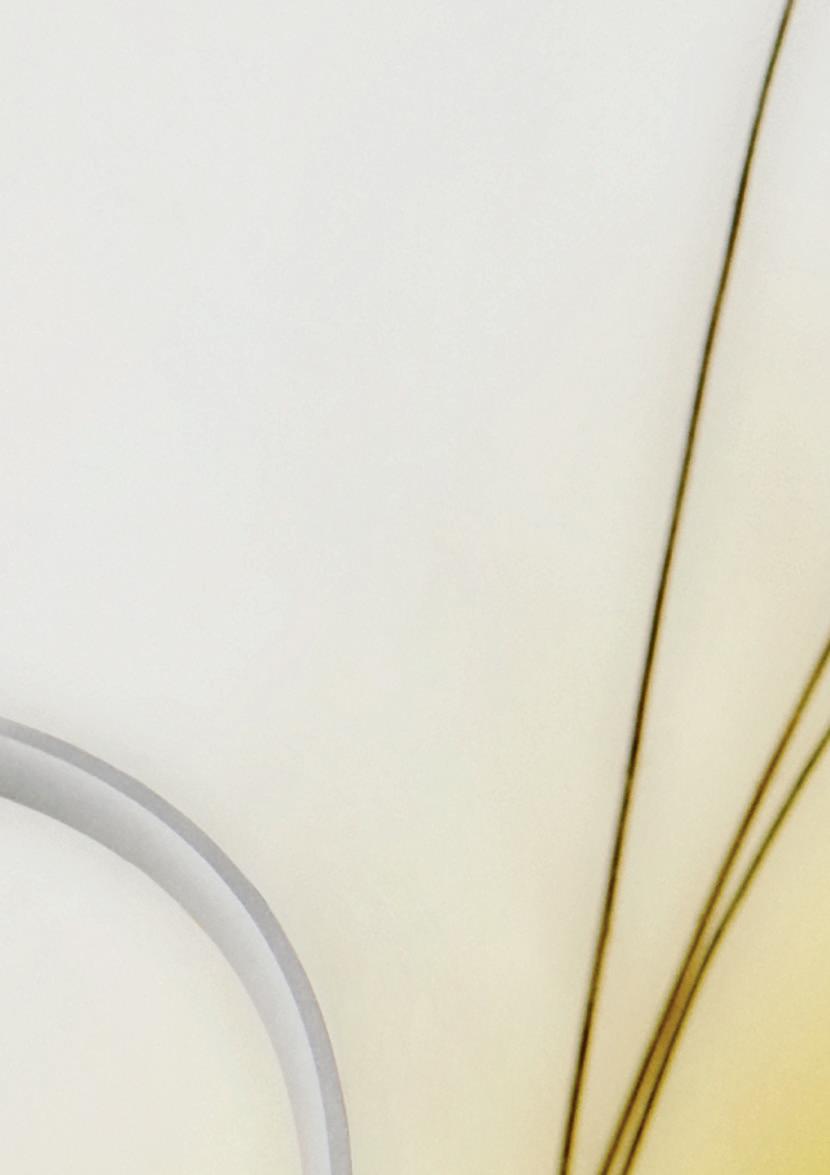




Of course we would have loved to visit Mecca - the spiritual heart of Islam. The city in which every Muslim who is physically and financially able must perform the five-day hajj pilgrimage, the fifth pillar of Islam, at least once in his life. (The other four are prayer, fasting, charity and belief in Allah as God and Mohammed as prophet.) Millions of Muslims from all over the world comply with this obligation and flood Mecca every year. But it is impossible for a non-Muslim to enter Mecca. Religious security services carry out strict checks.
Medina is then considered 'the next best thing', also a holy Islamic city, second in the ranking. Mecca is the birthplace of the prophet Mohammed, Medina the place where he died. It is not obligatory for a pilgrim to go to both Medina and Mecca, although the majority of believers do. The most important place in Medina is the Prophet's Mosque . From our room on the eighth floor of the Pullman Zam Zam Hotel we have a perfect view of the huge white house of worship. It is the largest mosque in the world after the Grand Mosque in Mecca. The building measures 617 by 675 and has ten minarets over a hundred metres high. The immense central courtyard is full of worshippers for evening prayers. There are thousands. We decide to take a look.


It is impossible for a non-Muslim to enter Mecca. Medina is then considered 'the next best thing', also a holy Islamic city, second in the ranking.
The mosque and the square around it are surrounded by a white marble fence with gates. This is as far as we can go, because as non-Muslims we are not allowed to enter the site. However, we get to talking to three nice Muslims from New York: Aqsa, Fatima and Youssef. The women are confident that they can get me in. Aqsa gives me an extra scarf so I can cover my hair and face better. “I have only been a practicing Muslim for four years,” she says enthusiastically. “Several years ago I found my 'spiritual self' by following the word of the Prophet. I feel happier and more complete than ever.” Can I ask a few questions? I ask. Aqsa has no problem with it. Does she think that men and women are equal in Islam? I start. I take the mosque as an example: a large section for the men and a smaller section for the women. The men are allowed to see the Prophet's grave, the women are not. Aqsa gives a somewhat evasive answer. “Muslim women are adored by their men because the Koran prescribes that they must be respected.” And what about the abaya? I want to know. One no longer has to wear it and yet almost all women do it. “Men simply have different needs than women,” she says. “Our dressing modestly makes it easier for them not to fall into temptation.” Isn't that a bit of an upside-down world? I ask with the attitude of a liberated non-Muslim woman. Isn't it up to the man to keep his urges under control if he wants to be a good Muslim? “You’re looking at it too much from a Western point of view,” counters Aqsa. “The abaya gives me inner peace. I am no longer concerned with appearance like I used to be, and I still feel like a woman through and through.”
Meanwhile, we are inside the women's section of the mosque. The interior is simply breathtaking. I understand that this first sight must be very emotional for many believers. I see lots of marble, beautifully inlaid floors and arches with complex geometric patterns. The many golden chandeliers enhance the grandeur of this building. Aqsa says she is retiring for prayers, and we say goodbye. I know my Muslim look is way too improvised and without Aqsa by my side I immediately get caught out. I quickly take some pictures because I already see a guard coming towards me. Am I Muslim? he asks. I try with a “not yet”, but it doesn't work and he asks me - firmly but kindly - to leave the mosque square. I try to sneak in through another gate because I came in from the other side of the square, but I am immediately spotted again. There is nothing to do but walk all the way around.
It's a strange sensation. This is a world to which I do not belong and will not be admitted, even for an introductory round, so to speak. On the other hand, I feel the excitement and solidarity of the many Muslims who come together here from literally all corners of the world and understand each other without words because they share the same ideology. Faith as glue. It works.
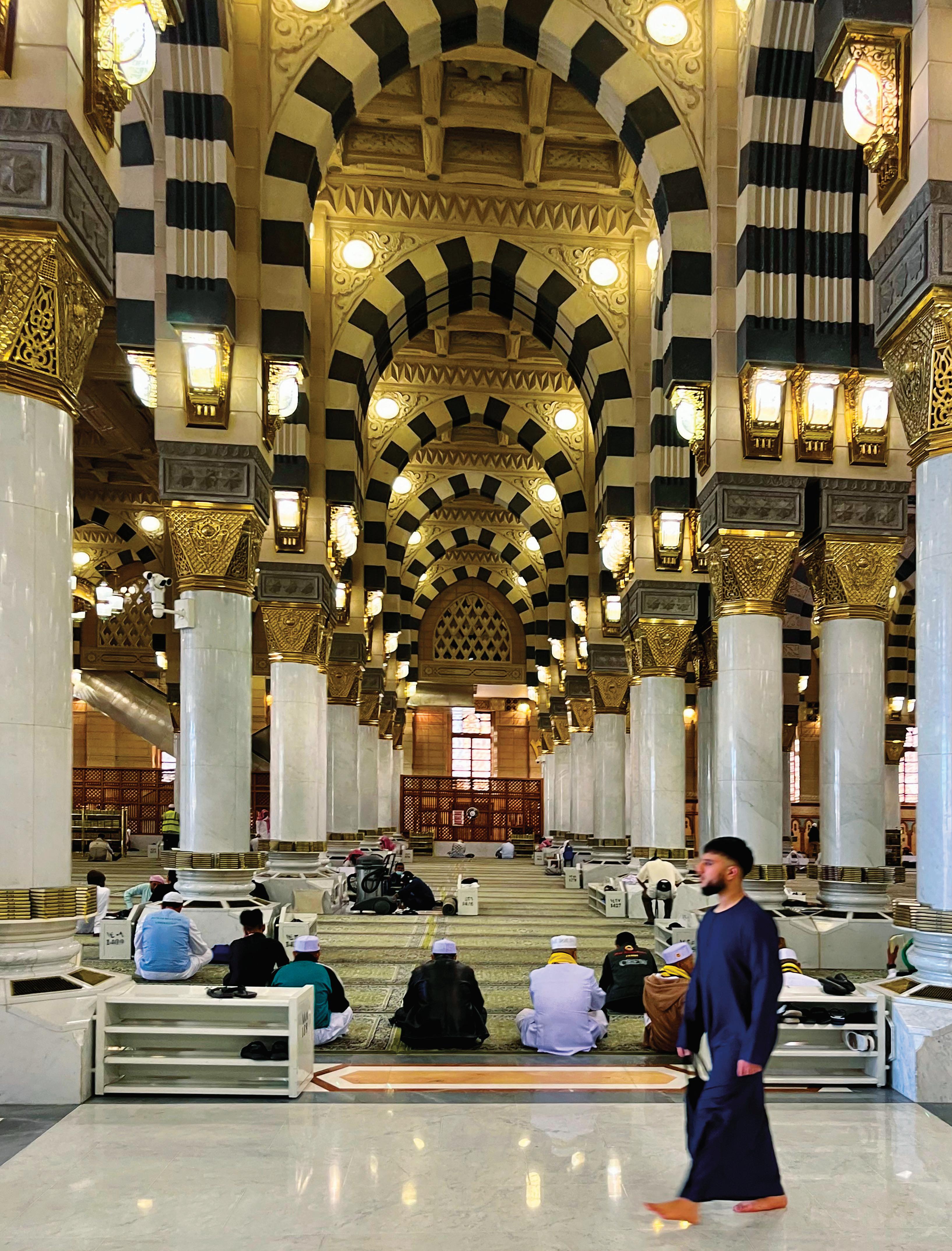

From Medina we head towards Jeddah, a city on the east coast of the Red Sea, the last leg of our journey. Since the seventh century, Jeddah has developed into an important trading post for the import and export of goods across the Indian Ocean. The city was also the gateway for Muslim pilgrims traveling by sea to Mecca. Thanks to this dual function, Jeddah developed into a thriving multicultural centre with a melting pot of peoples. Perhaps for that reason the city is significantly freer and more liberal than other Saudi cities. You can see this best in the women who are dressed much more colourfully and often don’t wear a headscarf.
Today Jeddah is the second largest city in Saudi Arabia with around 3.4 million inhabitants. Just like in Riyadh, the number of futuristic building structures is endless, and it is a place that reflects the ambitious future of the country. Modern Jeddah boasts many ultra-modern skyscrapers, immense shopping centres, wide palm tree-lined avenues and towering fountains. The port is enormous and plays a central role in the country's economy.
But the most beautiful thing about Jeddah is the old town of Al Balad . In 2014 it was added to the World Heritage List. Our guide Marwah guides us through the atmospheric historic centre with incense-scented souks, Ottoman houses made of coral stone and centuries-old mosques. One of the most striking features of the buildings in Al-Balad is the beautiful wooden latticework with intricate motifs, often painted in blue or green pastel shades. This wooden window and balcony cladding was not only beautiful, but also functional. It provided shelter from the heat of the sun, while the slats let in a breeze. To keep the heat out as much as possible, all houses had floors with very high ceilings of three metres and more. Unlike the houses in the rest of Saudi Arabia, those in Jeddah were not built of loam, but of coral stone dug up from the Red Sea. The trading elite who had the large houses built in the 19th century were extremely wealthy. One of the oldest and most famous houses had an interior staircase wide enough for a camel to carry water to the upper floors. The building is now owned by the Saudi government and has been converted into a museum. Let's be honest: the old quarter is no longer the glittering jewel it once was. The test of time has done its work. A large-scale renovation project will hopefully restore Al Balad to its original glory.
Saudi Arabia is one of the most fascinating countries in the world right now. Before our trip, we had many questions. Have these been answered? Some yes, some no. There is no doubt that the country has a lot to offer the visitor. Saudi Arabia brings together some of the most enchanting aspects of its surrounding countries: from the modern architectural splendour of Dubai to the rich cultural heritage of Jordan and the endless sand dunes of Oman. And yes, the country is in full transition. A lot is changing and it's happening quickly. However, for most Saudis it is still a matter of finding their way. Laws can be introduced or abolished overnight, but a change in mentality or culture takes more time. ♦
Thanks to : Mamoon Alshawi, Hero Balloon

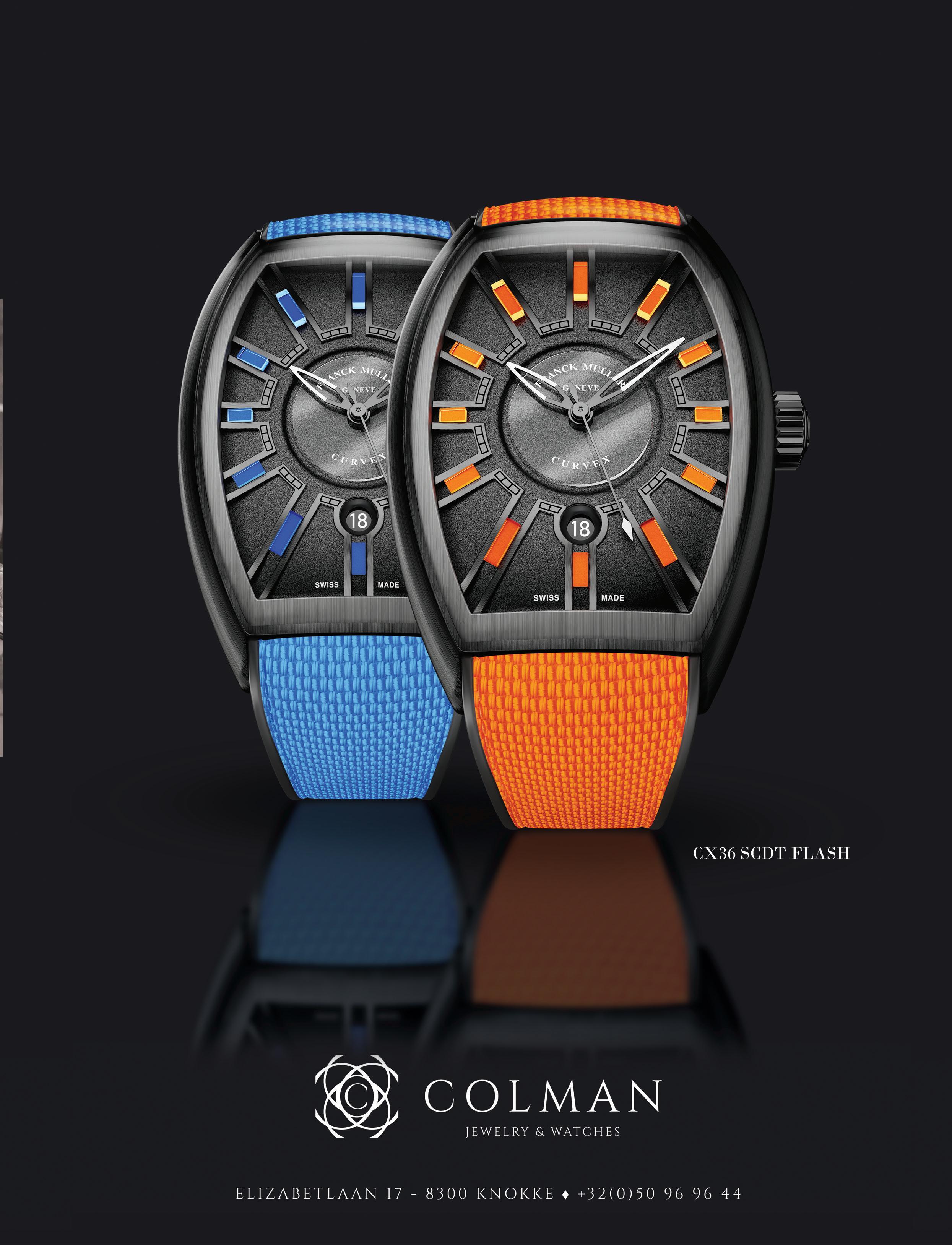
they know what they want and what they want is Porsche.
“
audi Arabia finally lifts the driving ban on women,” was the headline in all the newspapers six years ago. On 24th June 2018, Saudi King Salman announced that women would be allowed to obtain their driver's license, after decades of denial. Saudi Arabia was the only country in the world where women were not allowed to drive. For Saudi women, the new law is a step towards more freedom in the country, an opportunity they are eagerly taking advantage of. We are very pleased that James Butler – National Sales Manager at Porsche Centre Riyadh - was able to engage two female Porsche owners for an interview with Porsche. Meet Huda Al-Drees and Nora Albabtain.

She is modern, driven and quick-witted. Huda Al-Drees was at the front of the queue when it was announced that women were finally allowed to drive. “I think it's great that you want to talk to me about Porsche,” she says with a beaming smile. “There’s nothing I’d rather do.” And soon, that turns out to be completely true. Rarely have we heard someone talk about Porsche with so much fire and passion.
“The day it was announced that women were allowed to drive was the best day of my life,” she says. “More beautiful than my wedding day. Finally the time had come. I can't possibly describe what that did to me. I went straight out on the road. Without a driving licence. Naturally, many women wanted to drive as quickly as possible, which meant that there were long waiting times to obtain a driving licence. Not for a single moment did I think about waiting until I got that piece of paper.”
Huda got her driving licence two months later. We notice from her enthusiasm what a relief it was for the woman to finally be allowed to drive. But how did she end up with a Porsche? “I have always been crazy about cars, and I got my love for Porsche through my brother. He was a huge Porsche fan and had many Porsche magazines. As a little girl, I sat looking through those for hours at a time, wondering if I would ever be able to drive such a beautiful car myself. When my brother bought a Porsche a few years later, he parked the car in the garden so that I could get behind the wheel for a while. That was a goosebump moment for me. An unforgettable moment.”
Huda is a woman who knows how to tackle things. Knowing we would be interviewing her, she asked a photographer friend to take pictures of her with her two Porsches. She shows us the beautiful photos. “The Cayenne Coupé was my first Porsche. I bought it on 13th November 2019. I was already in the showroom a week before the Porsche Centre Riyadh announced the Coupé version. The salesman was amazed that I already knew the model. I was the very first buyer of a Cayenne Coupé in Saudi Arabia. I am not someone who buys a standard model car, but prefer a fully personalised version, configured exactly the way I want it. For me, the Cayenne had to be in Moonlight Blue with silvercoloured decorative trim and burgundy red interior. My second Porsche arrived in 2022. It was a 911 Targa in Aventurine Green. I have four children - two boys and two girls - but I will always call those two Porsches my 2 babies.”
“You have to drive a 911 as if you’ve just stolen it.”
Huda Al-Drees
The word 'babies' brings us to Huda's professional activities. She is a successful businesswoman and runs two companies. My 2nd Home is a group of daycare centres for babies and toddlers up to four years old. A year ago she also founded the Hadef Training Centre, which specialises in training, advice and job placement for all those involved in childcare. She explains a little about the how and why, but quickly switches back to the Porsche theme.
“Last year I was having lunch in a restaurant in London, and I got chatting to a man sitting next to me. He was Italian and the conversation naturally turned to cars. We talked about the difference between Italian and German cars. He was of course a particular fan of Italian cars. I told him: I will explain to you exactly what the difference is. A Ferrari
is like a very sexy woman, but one who has enhanced her beauty with Botox, fillers and some plastic surgery here and there. She is a woman you should handle with kid gloves. She has quirks and whims and the last thing you want is to upset or anger her. You can't just do whatever you want with her. A Porsche is also a sexy woman, but one who keeps it purely natural. She is different and unique, all style and grace. She is amiable and easy to get along with and she is always there for you. She is a friend, wife and mother. You can rely on her every day of the week. You can cruise gently with her or press the accelerator so hard that sparks fly.” Our mouths are wide open. Never have we heard anyone give such a beautiful comparison of both brands.
Huda is now in full swing, and her eyes are sparkling. “A Porsche gives you the feeling that you merge with the car. You become one, as it were. At least that's how I experience it. Someone once gave me some very good advice. He told me: if you drive a 911, drive it as if you just stole it. Feel that excitement, that adrenaline, that tension… and I can assure you: it works! I like to drive sharp and fast and zip through traffic from left to right, no matter how busy it is. Two weeks ago I was stopped by the police for driving too fast. I received a hefty fine, but I don't care about that. I know I am a good driver. I never had to learn to drive. That happened naturally. It's in my blood. I was born to sit behind the wheel of a car.”
“Do you know what my favourite workout is?” she asks. Getting behind the wheel of my 911 at five o'clock in the morning and being one of the few on the road, driving through the city's tunnels so I can hear the raw sound of the engine reverberating at full power. That's a real kick!”, she says with a mischievous smile and a big wink. And she's gone. We think they should hire that woman at Porsche. There is no better ambassador.


Huda has already overwhelmed us with her enthusiasm and openness, but we soon notice that Nora Albabtain is cut from the same cloth. Nora comes from an important, influential Saudi family and has a high position in the government. The exact department she works in is confidential. Although later in the conversation she does explain what her job entails.
That Nora is ambitious is putting it mildly. She is only 35 years old and can already provide an impressive curriculum vitae. She has a degree in Business Administration and Finance, has held top positions at American Express, Aramco (Saudi Arabian Oil Company), SIDF (Saudi Industrial Development Fund) and is now working at the place where the country's policies are created. It is a position that fits her like a glove because she is a born leader, result-oriented, with boundless energy and unconditional commitment.
"Finally a perfect 911 for my native country: the Porsche 911 Dakar.’’
Nora Albabtain
“I think it is a huge advantage that I have experience in both the private and public sectors. The Saudi Industrial Development Fund was midway between the two and was established to realise the kingdom's industrial development goals and programmes through various financing projects and advisory services. My current job is more or less an extension of that. Saudi Arabia has huge ambitions for 2030, focusing on economic growth, diversification and industrial transformation. I think it is absolutely fantastic that I can contribute to the current reforms. The great thing about it is that we can see what we are doing, we see how our efforts take shape and what impact they have. That gives enormous satisfaction.”
She inherited her passion for Porsche from her father. “My father was a car collector. He had his own workshop where he tinkered with cars. He taught me to drive when I was just eleven years old. There are plenty of remote roads in Saudi Arabia where you can practice. The first time I actually went out on the road and drove among other cars, I was twelve. We
were coming back from dinner and when I wanted to get in on the passenger side, my father said: ‘Why don’t you take us home today.’ I was taken aback for a moment, because of course I didn't have a driving licence yet. I would like to point out that we were abroad at the time and not in Saudi Arabia. What he asked wasn't legal, but it was my father's way of showing me that he had complete confidence in me. The day I turned eighteen, I received my driving licence. Obviously not from Saudi Arabia, but from Kuwait where an uncle of mine lived who had arranged it for me.”
Nora lost her father when she was only fourteen and it had a big impact on her. “I cherish his passion for cars and have partly adopted it to honour him. Especially when it comes to Porsche, because that was my father's favourite brand. I bought my first Porsche when I was thirty. Straightaway, a 911. I was so incredibly happy. I think the Cayenne is great, I think the Panamera is great, but my heart belongs to the 911. I bought my second Porsche in 2021. That was a Carrera 4S. That car gave me a completely different driving experience. Its performance is stronger thanks to the allwheel drive. I love how Porsche evolves with the future. How new technologies continue to be integrated.”
Nora proved that she not only enjoys being behind the wheel but is also keen to continuously expand her driving skills, by participating in the Porsche Ice Experience in Finland in 2023. From the desert to the ice. “It was an incredible experience. Drifting on snow and ice was totally my thing. I had already driven several Porsche models when they suddenly gave me the keys to a Taycan. It was the first time I drove an electric car. But what a revelation! Such accelerating power that car has! At the hotel, there was also a Porsche 911 Dakar. And I thought: wow, that's an interesting model. A 911 through and through, but suitable for off-road use.”
“When I got back home, that car kept going through my head. There are so many interesting and limited versions of the 911: the GT3 RS, the Porsche 911 Targa 4S Heritage Design, the 50th Anniversary Edition, the 911 Sport Classic, and so on. But this was finally a 911 that works for where I live. I am in Saudi Arabia most of the year. A desert country. The car has more ground clearance, heavier tires and a lot of power, making it perfect for difficult terrain. I can drive it both in the city and off-road and never have to worry about whether the terrain is too hard for the car. So I ordered
it. In Shadegreen. The most beautiful colour ever.”
Nora describes the 911 Dakar as a milestone in her life. “You know, in my opinion you have to earn a 911. It's not about how much the car costs, but what it means to you. And to me it means success, the fact that you have achieved something in your life. If I didn't think that was the case, I wouldn't have bought the car. I mean that. And conversely, the 911 also deserves a fitting driver. It is, as it were, a form of mutual respect. I have driven all brands: Ferrari, Lamborghini, Mercedes SLS, Aston Martin, you name it, but no car gives me as much driving satisfaction as the Porsche 911. Even with the PDK system you still have complete control of the car. You steer it. At the moment I am focusing on classic models. I am looking for a 964 and a 993. A new chapter in my love for Porsche.” ♦
With thanks to Huda Al-Drees and Nora Albabtain.
 Nora Albabtain.
Nora Albabtain.
whom the glass is always
He quickly updates a salesperson about an upcoming deal, cheerfully puts his arm around a loyal customer, raises his hand to someone who is just entering the showroom and then rushes into the meeting room where we are waiting for him. “I'm all yours,” he says with a broad smile. James Butler is a man with boundless energy and an unwavering positive attitude. As National Sales Manager at Porsche Centre Riyadh, he not only drives sales of Porsches, but creates a culture of dedication and enthusiasm both within his team and among customers.

Who is James Butler?
I'm from Bury, a small town near Manchester, and have been in the automotive industry for 45 years. I started as a mechanic when I was 15 and in the years that followed, I gained experience in almost every department - from administration and accounting, to sales, marketing and service. I was lucky enough to work for a company that saw potential in me and gave me a lot of opportunities until I finally acquired the position of general manager.
How did you end up in Saudi Arabia?
Ten years ago I was contacted by a company asking if I was interested in a job in Saudi Arabia. At Ferrari they were looking for someone to provide training. With my technical background and extensive experience in the automotive industry, I was a suitable candidate. I knew nothing about the country, but the timing was perfect. I had already been working for 35 years and was ready for a new challenge.
How did you like the country?
It was definitely a culture shock. Life is completely different here. Especially in the first years that I was here. For example, religion plays a very important role and influences all aspects of daily life. I also had to get used to the strict social norms. Men and women live virtually separately in public. When I went to visit someone, the women would go one way and the men the other. In restaurants you have a section for the men and a 'family section' for the women and children. That was all very strange. But I also found it very fascinating to discover the Saudi culture. Now a lot is changing. The country is becoming much more open and the strict separation between men and women is being relaxed. It also became much easier for me when my wife came to live in Saudi Arabia too. The first two years I was here alone. When Hayley broke her foot, she came here to recover and she stayed straight away.
Do those high-ranking gentlemen expect different treatment?
I treat everyone the same, whether it is the cleaner, one of my colleagues or someone from the royal family. For me it's all about respect. And I can say from experience that even our richest customers are very modest. They remain amiable people to do business with, even if they are rolling in money.
We assume they don't just walk into the showroom. Usually an employee of theirs makes an appointment and the visit is announced. Very occasionally, everyone is asked to leave the building so that they can visit the showroom in complete privacy. But I don't like that, and I try to avoid it as much as possible. I find that disrespectful to the other customers. I usually receive them in one of the VIP areas. That works fine.
'Training in Saudi Arabia means not only imparting knowledge but also a good work ethic.’
James Butler
You didn't work for Ferrari long.
No, the Ferrari business here is small. Ten years ago they sold about 60 cars a year. That wasn't busy enough for me. I wanted a bigger challenge. So I switched to Porsche. At Porsche they sold 500 cars a year. That was quite a bit more. That's how I ended up at Samaco Motors, the exclusive distributor of top brands such as Audi, Bentley, Bugatti, Lamborghini, Volkswagen and of course Porsche.
How is Porsche represented in Saudi Arabia?
We have three points of sale – one in Riyadh, one in Jeddah and one in Khobar – and six workshops.
What do you like most about your job?
Having contact with people, building relationships. Every day is different. Every contact is different. One day I may be talking to a normal businessman, the next day to a prince, a sheikh or an important minister.
Which model is the most popular in Saudi Arabia?
That is definitely the Cayenne Coupé. This accounts for approximately 45% of our turnover. Then come the other versions of the Cayenne and the Macan. And then of course you have the 911. We sold 300 of that model last year. The 911 is becoming increasingly popular.
How many Porsches do you sell per year?
When I started working here 10 years ago, we sold 500 cars a year. Now that figure is 1,400. That's nice growth. We will round off 2024 with a higher figure again. The money is there. Many Arabs are rich. Since women have been allowed to drive, we have a lot more potential buyers. Now the ladies buy the car that everyone dreams of. (laughs) We think that 2,000 cars is about the optimal sales figure, but at the moment we are not getting that number from the factory. Saudi Arabia is classified as an emerging market. That means limitations. We still have to prove ourselves.
We get the impression that there is also quite a bit of demand for limited editions. That's right. Saudis like something special. But we also only get a limited number of those exclusive models. So we have to choose who we 'grant' a certain model. (Makes air quotes.) We take a lot of factors into account. We look at the customer's profile. What did he buy first from Porsche? Does he have a collection? And if he has a collection, what’s in that collection? Naturally, our top customers have priority. Osamah Shaker, for example, the man you are also interviewing, is someone who always has first choice.
'Saudization, the Saudi nationalisation programme introduced in 2011 that requires companies to employ a certain number of Saudi nationals, also has its impact on our company.'
James Butler
What is it like working with Saudis?
Not always easy. Not because they aren't friendly, they are the nicest people around, but they have no work ethic. Which isn't surprising if you've never had to work. Until a few years ago, the state took care of its citizens from cradle to grave. Almost all jobs were done by foreigners. For all the simple jobs from driver, cleaner, waiter to labourer, there were many employment migrants from Asian and African low-wage countries. For positions that required a certain expertise, expats from Europe and America were recruited, like me. And in the meantime, the Saudis were living the lives of princes. But due to the enormous population growth in recent years, it is no longer feasible for the government to pamper everyone. In the last ten years the population has increased from about 27 million to almost 37 million. That's immense. Saudi Arabia also has a very young population. About 75% are younger than 35 years old. They now have to get to work themselves. To achieve this, there must be enough interesting jobs for them. In 2011, the government therefore introduced the so-called 'Saudisation' programme.
What does that entail, exactly?
Saudisation is the Saudi nationalisation programme, also known as Nitaqat. It is an initiative of the Ministry of Employment that requires companies to employ a certain number of Saudi nationals according to a quota system that depends on the sector and the size of the company. Saudisation focuses mainly on the private sector. The plan had little impact on us in the first few years. That changed drastically when Crown Prince Mohammed bin Salman decided last year to set new and stricter targets. Suddenly, 90% of our employees in administration and sales had to be Saudi. In a three-month period, we had to dismiss accomplished and excellent foreign workers and replace them with people who had no experience and knew nothing about the industry. That was intense. Suddenly we had a completely inexperienced team with people who had to be trained from scratch. A challenging situation. My experience in providing training and knowledge of the various departments came in handy. At the same time I took care of the customers, because of course everything had to keep running. That training process is still in full swing. Instilling the right work attitude is a very important aspect.
How do you handle that?
First and foremost by setting a good example. Some Saudis have a habit of arriving late, suddenly disappearing or calling in the morning to say that they don't feel like coming to work for a day. Of course that cannot happen. They don't realise that there are rules that must be followed for a business to function efficiently because they were never taught. What I do is not only training, but above all educating. I hope that when they see how hard I work and how successful I am because of it, they understand that the same is expected of them.
You have a lot of energy. You resemble the little rabbit from the Duracell commercial, that keeps going, while the others have long since given up. How do you keep up that pace?
I get that question often. (laughs) I think it's all about passion. I really enjoy my job. I feel at home here. And Samaco is also a great company to work for. We have a CEO, Mohammed Raffa, who really cares about the staff and gives us the incentives to stay motivated. That is important.
 Porsche Centre Riyadh.
Porsche Centre Riyadh.
Do you see yourself ever returning to the UK?
I don't know. The bond with my home country remains of course and somehow, I think I will end my life there. But at the moment that is not an issue, and we are enjoying ourselves here. Saudis are wonderful people: friendly, warm-hearted, generous and loyal. If you have made friends with a Saudi, you have a friend for life. They would literally give you their last riyal if they could help you out. The medical services here are excellent and it is also an extremely safe country. There is no crime at all.
We have been in contact with each other for several years. What did you think when we first contacted you to ask if you were interested in participating in a report about Porsche in Saudi Arabia?
I thought it was a fantastic idea. And not just because of Porsche. I also thought it was an excellent opportunity to show how good things are in Saudi Arabia. People often talk negatively about this country. I don’t like that. I don't think you should spout opinions about a country if you haven't lived there or at least been there. This is not to say that everything is a bed of roses in Saudi Arabia. Saudi Arabia certainly has its dark sides, but also many good ones. Moreover, I knew that there would be plenty of candidates among our Porsche clientele who would be happy to talk about their passion for Porsche. Our customers are all huge Porsche fanatics who are devoted to the brand with heart and soul.
James Butler did something incredible: Just for us, he placed a brand new Taycan on a trailer in Riyadh and delivered it 1,000 kilometres away in the middle of the desert so we could take the photos we thought we could only dream of: a Taycan 4S in front of the impressive mirror building of the Maraya Concert Hall against the backdrop of an endless desert. ♦
Our eternal thanks, James!


Osamah Shaker is a tall man who commands respect by his presence alone. He is particularly good with numbers and statistics and has made fortunes in the banking world. Investing is his passion, and he does that himself, including in cars. He actually had a villa built for his unique collection. There, his beautiful vehicles can be seen shining, ready for use. We are honoured that the man makes time for us.
A short introduction?
I am Saudi, born and raised in Riyadh, married and have two adult sons. I have worked in the banking sector all my life. The financial world has always fascinated me. I mainly focus on investment banking: investments, shares and stock markets are absolutely my thing. I obtained my Bachelor of Administrative Sciences and Quantitative Methods from King Saud University in Riyadh and went to Colorado State University for my Master of Science in Statistics . I am currently CEO & Director at GIB (Gulf International Bank) Capital LLC, a Saudi investment bank. I also sit on the board of directors. Before that, I worked at various top banks in Saudi Arabia, always in management positions. I travel a lot and am an avid car enthusiast.
Here we see an impressive collection of Porsches and Ferraris. Do you have a preference for either brand?
I may be one of the few people who doesn't have a preference. Both brands fascinate me equally and it has been that way all my life. Most people are either avid Porsche fans or Ferrari enthusiasts. They are, as it were, two camps. My heart is split. The two car brands give me a completely different driving experience and emotion. That's also the beauty of it.
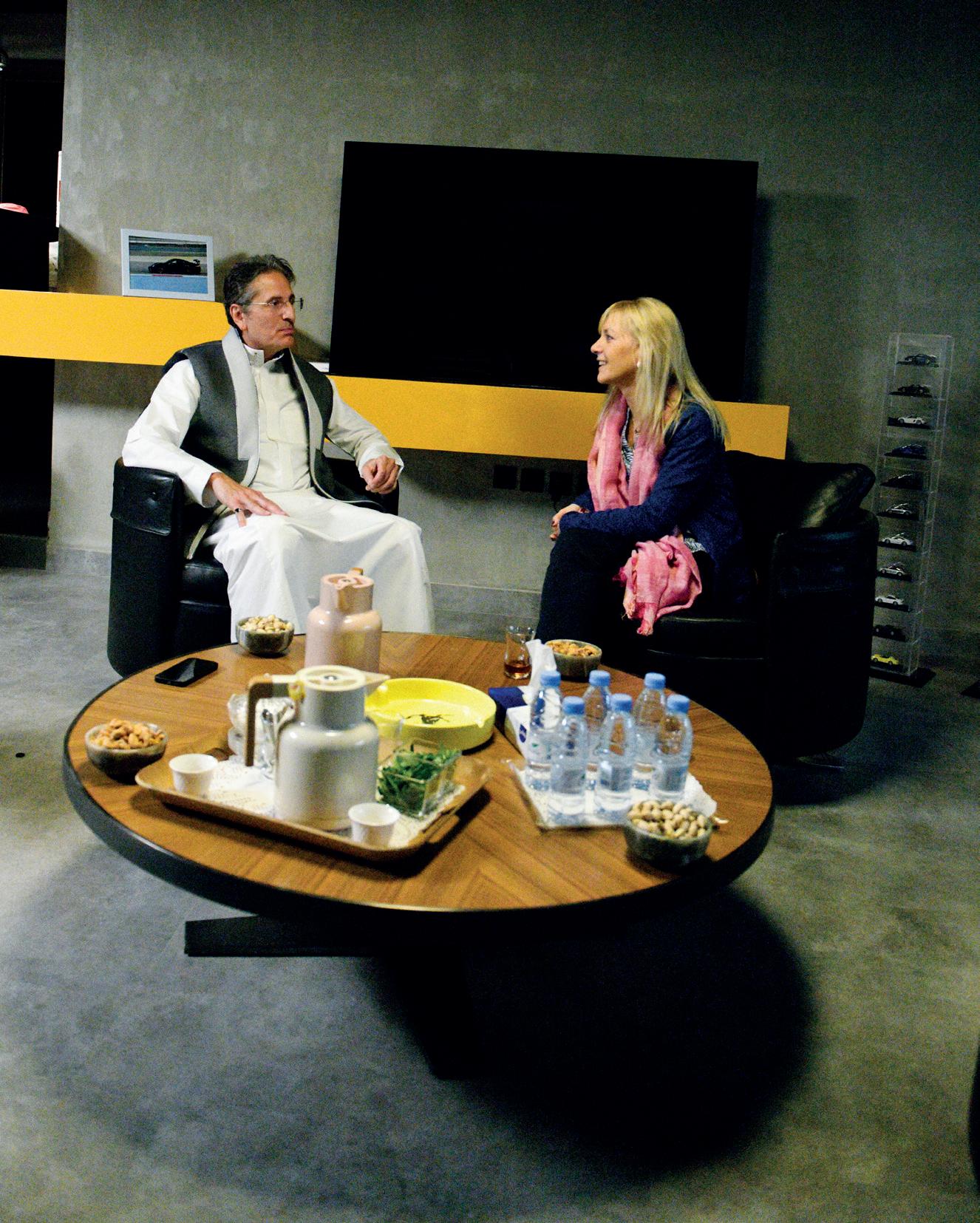


'Most people are either avid Porsche fans or Ferrari enthusiasts. My heart is split. Both brands fascinate me equally.'
Osamah Shaker
What is the biggest difference between the two brands for you?
Ferrari cars are a lot more sophisticated and complex than Porsches. Much more power and computer assistance. In particular the latest models. This is less pronounced at Porsche. This ensures that the driving experience with a Porsche is more purer. You are much more dependent on yourself when you are behind the wheel so that you really feel like you are driving yourself. Especially with the older models. That's an amazing sensation.
By the way, my cars are absolutely not only for show. I drive all of them. Just on the road, during road trips or on the racetrack.
How many cars do you have in total?
I have 11 Porsches (all 911s) and 9 Ferraris.
Do you have a favourite car?
Of course I have two, one of each brand. (laughs) For the Porsche it is the black 964 Turbo 3.6 similar to the one from the 1995 film Bad Boys. I had to wait the longest to find that car. From the moment I saw the film, it was on my wish list. For Ferrari it is the blue TDF. That is very close to my heart. But don't make me choose between the two. That's like having to say which of your children you love the most. That doesn't work either.
What do you think about the current changes taking place in Saudi Arabia?
Fantastic! It's a dream come true. I have a very positive attitude, but what is happening now is beyond my wildest dreams. The scale of the VISION 2030 project and the speed at which it is developing is unprecedented. I don't think there is any other country that has ever undergone such a rapid transition. Ten years ago, foreign investors kept asking me how I saw the future of Saudi Arabia and I always gave them an optimistic picture because I really believed in it. Saudi Arabia had and has all the ingredients to grow: people, capital and products. The world only sees Saudi Arabia as an oil country, but we have so much more to offer. You can now see how resilient our economy is. In addition, we have two things that no other country in the world has: Mecca and Medina. Saudi Arabia is always portrayed in a very simplistic manner. There are many prejudices. That is why it is good that our borders are now open to tourists so that people can see with their own eyes what things are like in Saudi Arabia. That way they can reach an informed opinion.

'The transition Saudi Arabia is currently going through is a dream coming true. The scale of the VISION 2030 project and the speed with which it is developing are unprecedented.'
Osamah Shaker
Is everyone happy with all these reforms? Aren't there people who would rather everything stays the same?
Naturally. There will always be such people. But they are in a minority. I myself come from a conservative family. We always strictly followed the rules. But we're excited about what's happening now.
The population in Saudi Arabia is increasing very quickly. Aren't you afraid it'll get too big?
Not at all. I rather see it as an advantage. We have a mainly young population, and they are eager to participate in all the changes that need to be achieved. We expect a lot from them. They are the ones who have to make the change happen. The government is also investing heavily in training programmes both here and abroad. Many young people go to foreign universities. This is not only important for the study itself, but it also broadens their worldview. They get to know other cultures. What is also important: Saudi Arabia has a strong population of its own. For example, in Dubai they have done a fantastic job and created a prosperous city, but only 10 to12% of the population is Emiratis.
For example, could the revolution that Saudi Arabia is going through also happen in Iran?
I feel that we are setting an example for other Arab countries. Saudi Arabia was one of the most conservative countries in the world. And look what's happening now. It is certain that a country such as Iran is also keeping a close eye on what is currently happening here.
Why are all these changes suddenly happening now?
Because for the first time we have a young leader. Crown Prince Mohammed bin Salman is only 38 and very ambitious. He has a clear vision and the courage to translate that vision into action. He has started a movement that will take us to a much better future with a stronger economy and a more modern society.
One last question: what do you think of the electric Porsche?
I have two hybrid cars, but to be honest I'm not really interested in fully electric cars. There are a number of things that I miss in electric cars. For me, the emotion of driving comes from the sound, from shifting into both higher and lower gears. Speed and acceleration are less important to me. The battery makes electric cars heavy, which is a disadvantage, because light cars provide more driving pleasure than heavy cars. I have no doubt that Porsche will continue to come up with new technologies. The Mission X is a promising example. But until it goes into production, I will opt for hybrid cars. They deliver the best of both worlds. ♦
Thanks for this conversation.

If you can dream it, we can build it.
EXPERIENCE THE DIFFERENCE Moerstraat 53,
Elevating luxury living, one villa at a time. From the moment you step through our doors, your dream starts to take shape. Established in 1970, we build further upon 50 years of heritage and craftsmanship Thanks to our amazing team, building at Vlassak-Verhulst is an experience. An old charm or a new gem. Building, renovating or a readymade home. From design to details. From raw materials to result. From craft to art. We inspire, challenge and bring you closer to your dream. www.vlassakverhulst.com